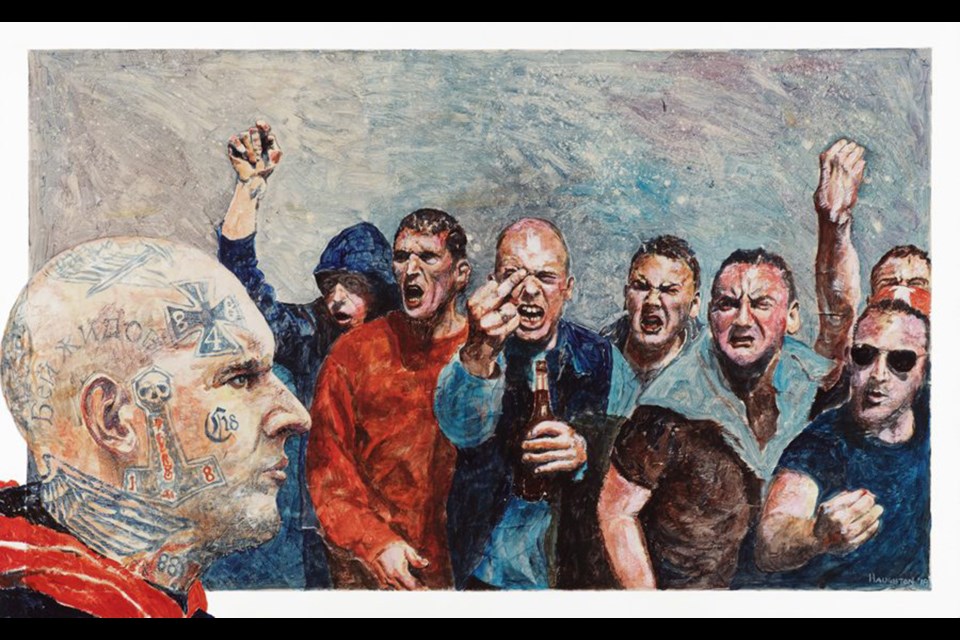A New Westminster artist has two very different exhibitions at galleries this month.
David Haughton’s work is being featured at both Visual Space Gallery in Vancouver and Gallery 110 in Seattle.
In Vancouver, art lovers can check out 80+ Views of Mount Baker: Final Homage to Hokusai. This series of paintings pays tribute to the Japanese artist Katsushika Hokusai, an artistic hero of Haughton’s for many years. Hokusai is best known for his Thirty-Six Views of Mount Fuji; in similar fashion, Haughton’s work pays tribute to Mount Baker and its surrounding areas.
That exhibition is on from Sept. 13 to 26 at Visual Space, 3352 Dunbar St. (between 17th and 18th, on the east side of Dunbar). It’s open noon to 5 p.m. daily, and an opening reception is on Saturday, Sept. 15.
In Seattle, Haughton is exhibiting his Angry White Men, a series of provocative paintings that features portraits of neo-Nazis, livid gun advocates and resentful and angry protesters.
“Rich with texture, they capture the rage and violence of angry white men as they express their frustration, desperation and fear towards people who are not like them,” a press release notes.
The images are taken from news photos in the U.S., the U.K. and Europe.
Haughton, in the press release, notes that everywhere he looks in the news of the world, he sees these angry white men.
“Their towns have been hollowed out by the closing of factories or mines. The work done by their parents for a decent wage is now done abroad, and by machines and robots. Their insecurities are shaped into weapons by demagogues who blame the people who aren’t like them: immigrants, elites, liberals, democrats,” he said. “Feelings of frustration and inadequacy are soothed by myths of an older, better time – a time when people loyal to their tribe or ‘nation’ were honoured, respected and rewarded.”
Haughton noted that in painting these men, he can “dimly see” their humanity.
“I also understand that, given that in the right combination of frustration, desperation and fear, I might look like them,” he said. “I, too, have ‘bred in my bones’ the capacity for fear, anger and violence towards strangers who look different, talk a strange language and now compete for the same resources.”
For more on both exhibitions and Haughton’s work, see www.haughton-art.ca.



